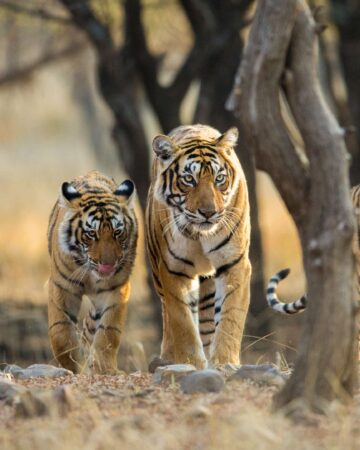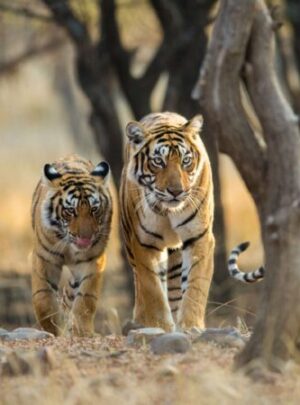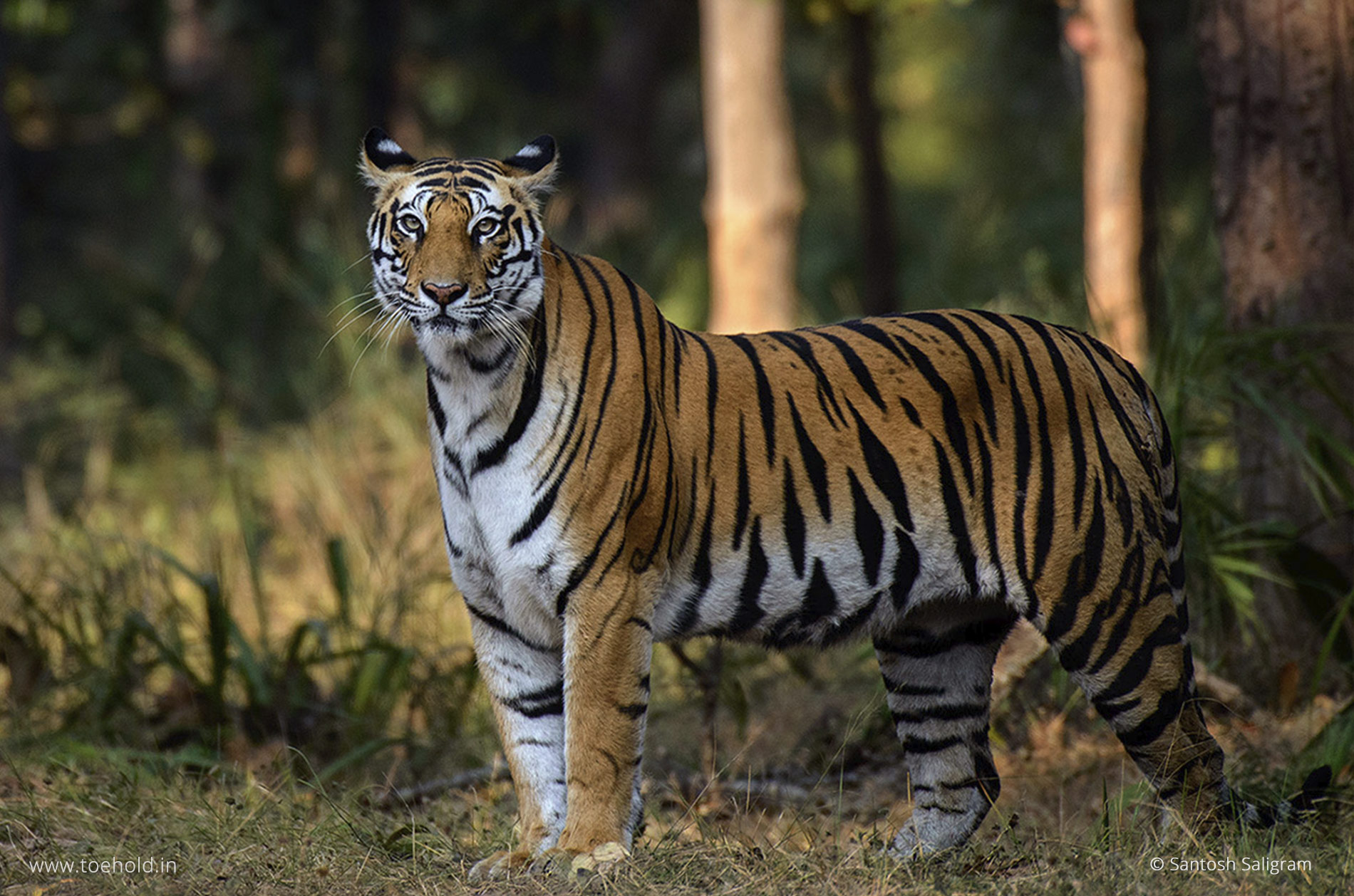Bandhavgarh National Park is a national park of India, located in the Umaria district of Madhya Pradesh. Bandhavgarh, with an area of 105 square kilometres (41 sq mi), was declared a national park in 1968 and then became Tiger Reserve in 1993. The current core area is spread over 716 square kilometres (276 sq mi).
This park has a large biodiversity. The park has a large breeding population of leopards, and various species of deer. Maharaja Martand Singh of Rewa captured the first white tiger in this region in 1951. This white tiger, Mohan, is now stuffed and on display in the palace of the Maharajas of Rewa. Historically villagers and their cattle have been at a threat from the tiger. Rising mining activities around the park are putting the tigers at risk. The Park derived its name from the most prominent hill of the area which is said to have been given by Lord Rama to his brother Laxman to keep a watch on Lanka The fort was built by Gond Dynasty king. (Bandhav = Brother, Garh = Fort)
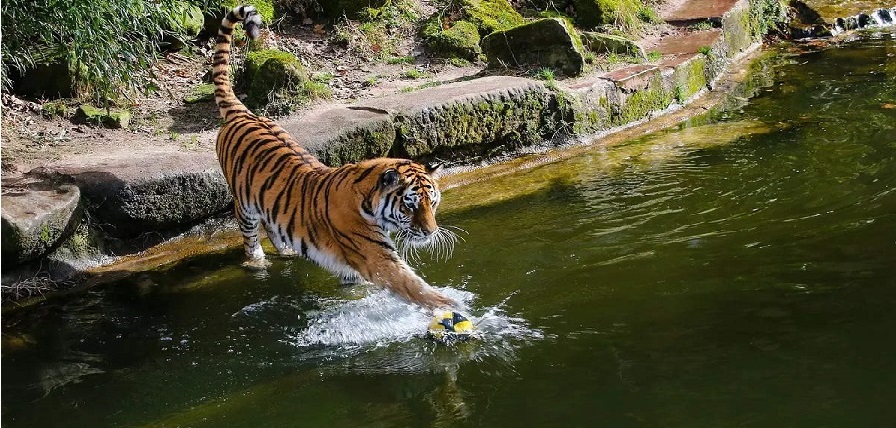
Safari Zones :
From tourism point of view, the park is divided into 06 zones. Out of them Tala, Magadhi, Khitauli are core area & Dhamokhar, Johila, Panpatha & are buffer area.
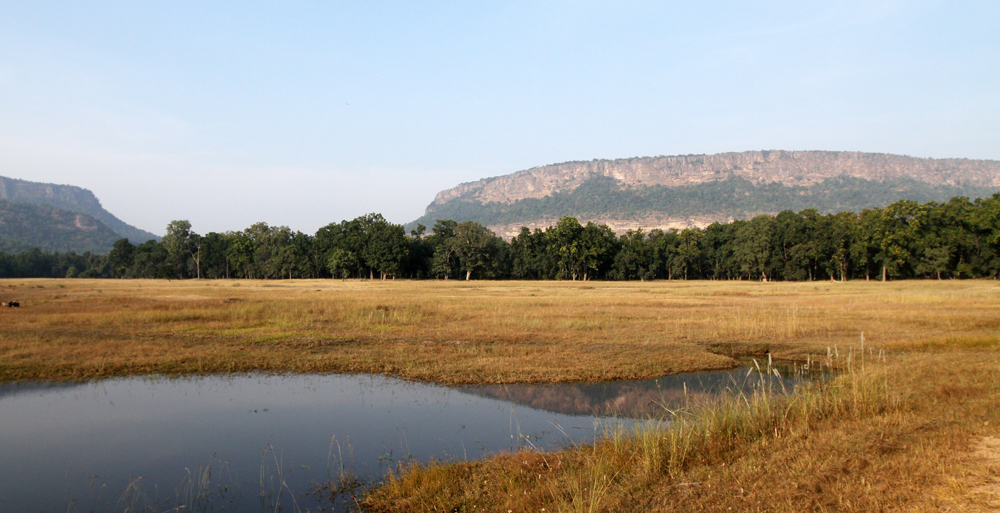
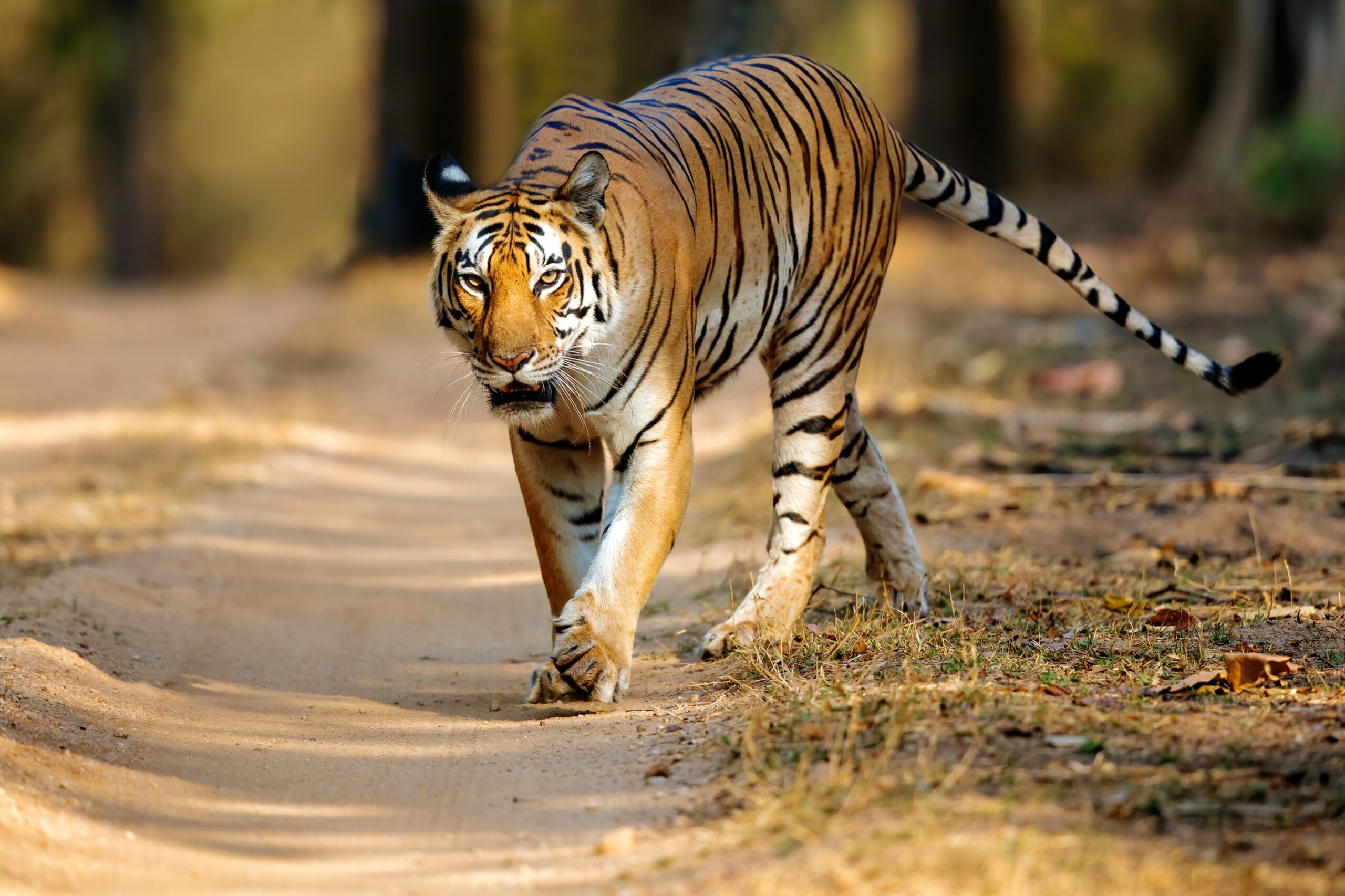
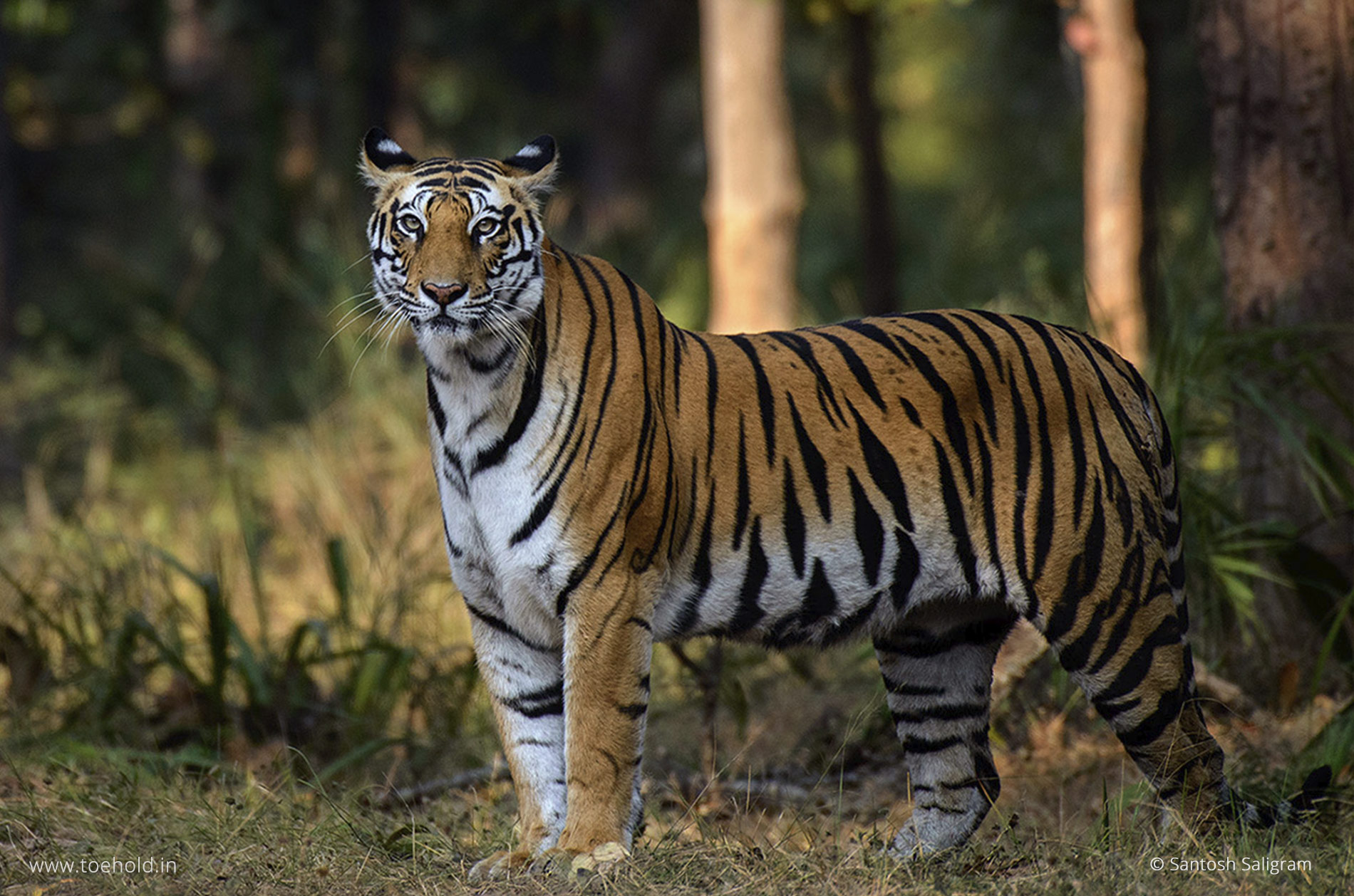
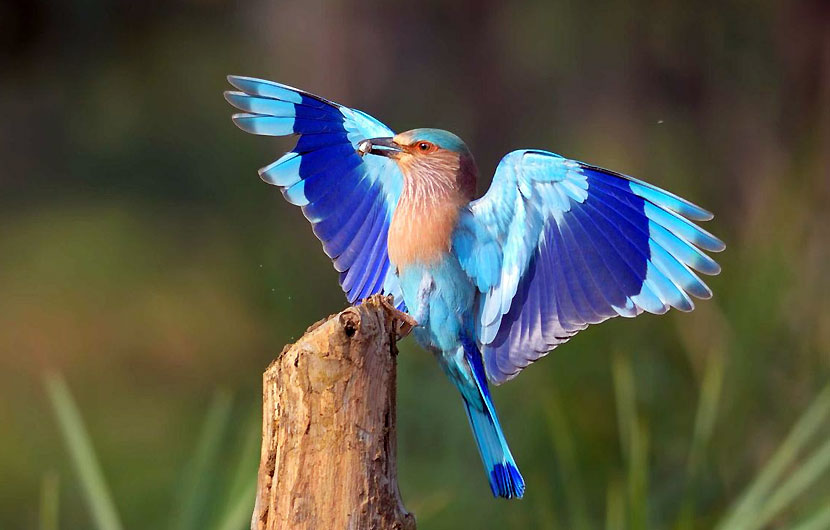

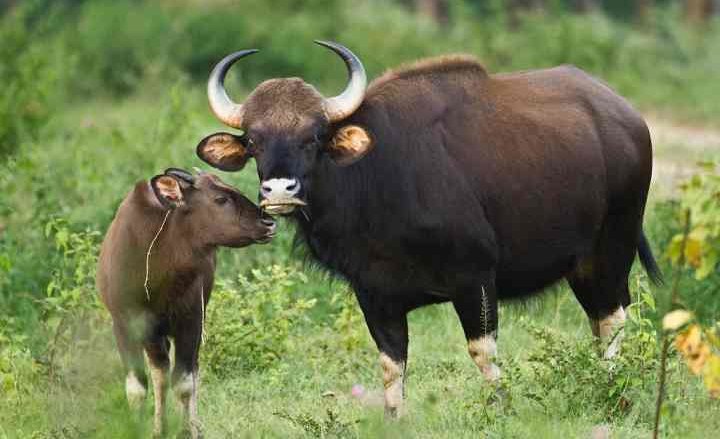
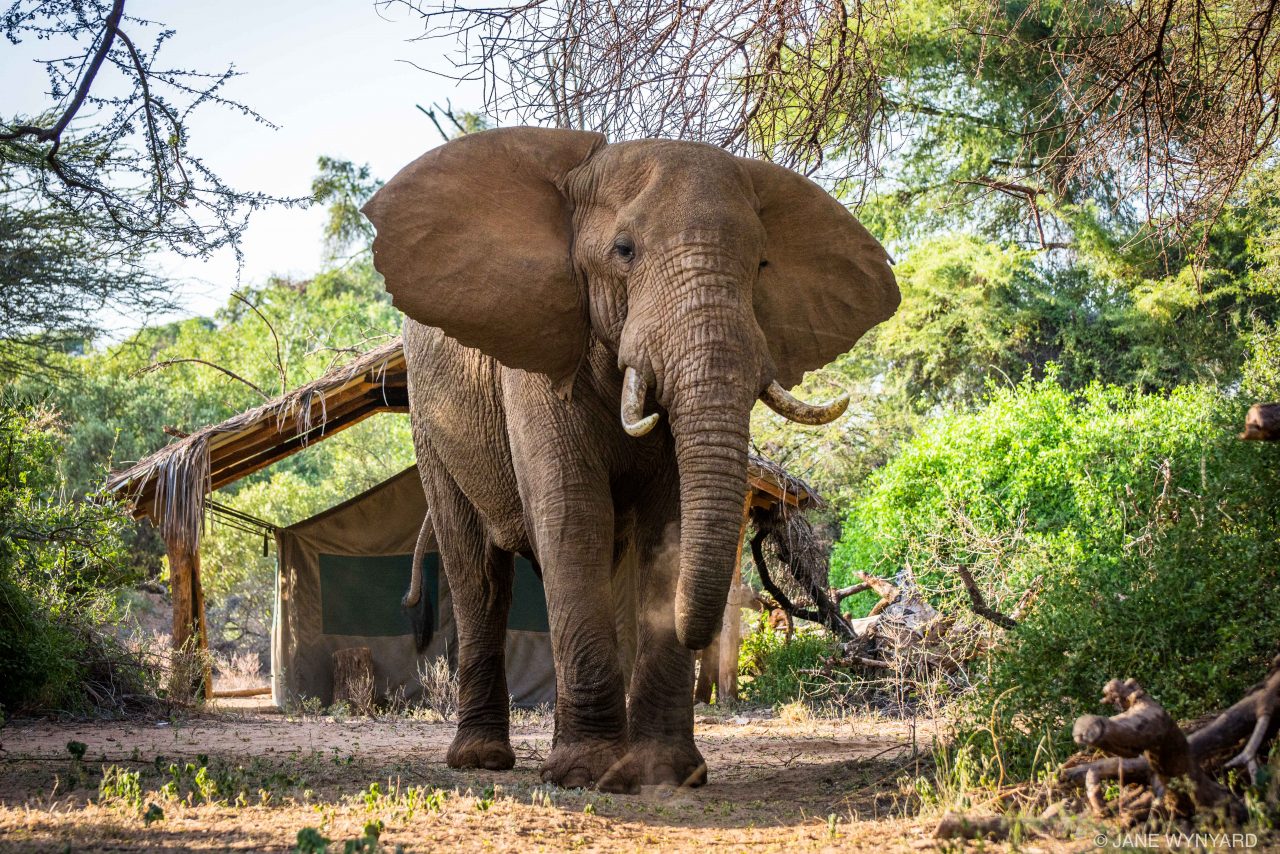
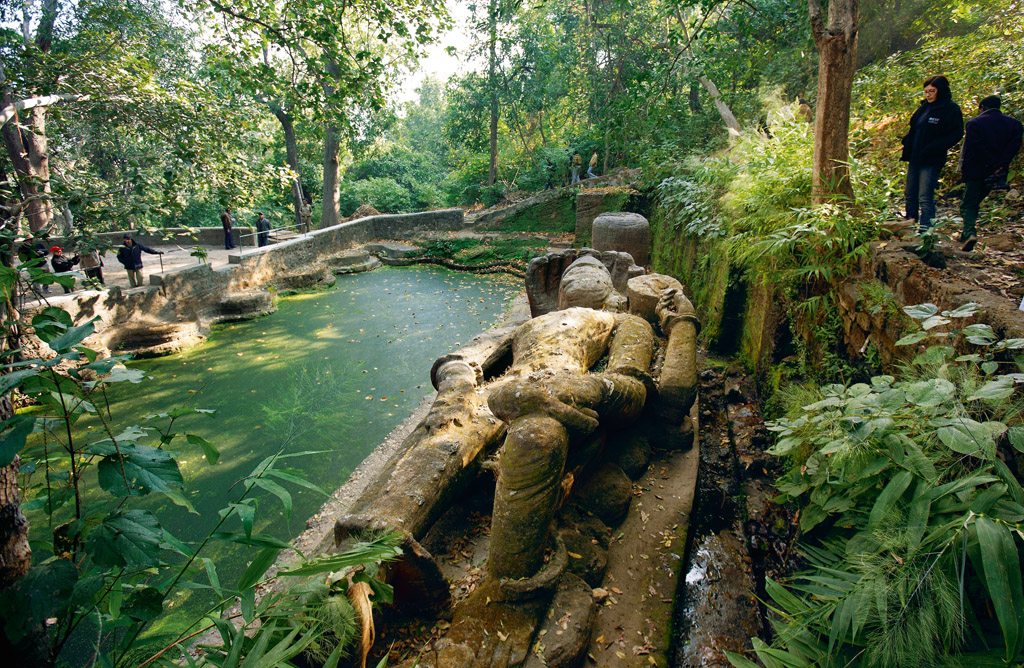
Animals And Birds :
With the tiger at the apex of the food chain, it contains at least 37 species of mammals. According to forest officials, there are more than 250 species of birds, about 80 species of butterflies, a number of reptiles. But many people have the species’ list of about 350 birds along with photographs. The richness and tranquity of grasslands invites pairs of sarus cranes to breed in the rainy season.
One of the biggest attractions of this national park is the tiger (Panthera tigris tigris). Bandhavgarh has a very high density of tigers within its jungles. The 105 km2 of park area open to tourists was reported to have 22 tigers, a density of one tiger for every 4.77 km2. (Population estimation exercise 2001). The population of tigers in the park in 2022 was about 65-70.
There is a saying about the Park that goes: “In any other Park, you are lucky if you see a tiger. In Bandhavgarh, you are unlucky if you don’t see (at least) one.”
Bandhavgarh has one of the highest density of Bengal tigers known in the world and is home to some well-known tigers which are large. Charger, a tiger so named because of his habit of charging at elephants and tourists (whom he nonetheless did not harm), was the first healthy male known to be living in Bandhavgarh since the 1990s, as well as a female known as Sita. Charger once appeared on the cover of National Geographic and is considered the second most photographed tiger in the world. Almost all the tigers of Bandhavgarh today are descendants of Sita and Charger. Their daughter Joita, sons Langru and B2 also maintained their tradition for frequent sighting and moving close to tourist vehicles. Mohini, another female, became prominent following Sita’s death.
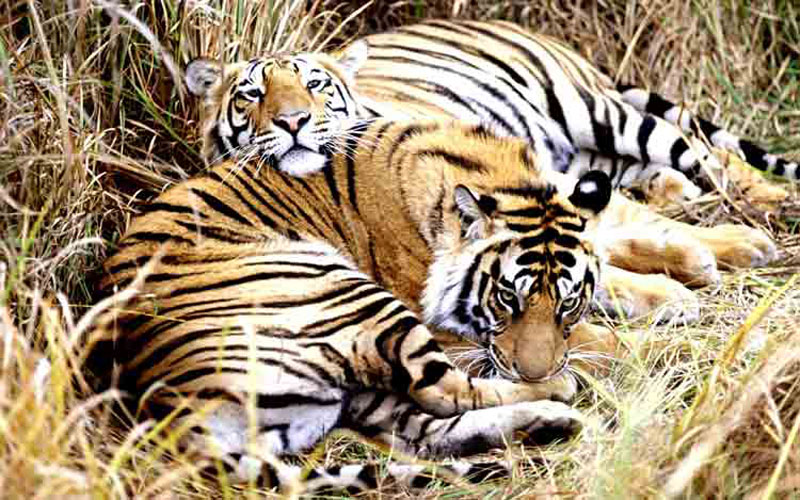
She mated with the male tiger, Mahaman. She later died of her wounds from a vehicle accident. Charger died in 2000 and his body was buried at Charger Point where he was kept in a closed region at his old age. Between 2003 and 2006, many of his descendants met with a series of unfortunate ends. B1 was electrocuted and B3 was killed by poachers. Sita was killed by poachers too.
After the death of Charger, the fully grown B2 survived as the dominant male in the forest between 2004 and 2007. Mating with a female in the Siddhababa region of Bandhavgarh, he became father of three cubs. One of them was a male. He was named Bamera. He was first sighted in 2008 and is now Bandhavgarh’s dominant male. In November 2011, B2 died.

Transportation :
Bandhavgarh is located in Umaria district of Madhya Pradesh. It is 32 kms (0:30hrs) from Umaria, 97 kms (02:30 hrs) from Katni, 97 kms (02:30 hrs) from Shadol, 117 kms (02:30 hrs hrs) from Rewa & Satna, 170 kms (03:30hrs hrs) from Jabalpur, 207 kms(04hrs) from Kanha national park.
The nearest airports are Jabalpur, Nagpur (450 kms/ 07 hrs) And Khajuraho 226 kms (04 hrs).
Safari Prices:
| Zone | Prices |
| Tala | INR6000 |
| Magadhi | INR6000 |
| Khitauli | INR6000 |
Timing :
The timings of Bandhavgarh National Park will differ according to seasons. In winters the daylight hours make the evening exit time shorter and morning entry time longer. The best time to enjoy wildlife safari at Bandhavgarh National Park is from the months of October to June. The park remains open for wildlife enthusiasts from 15th October to 30th June.
| Park Safari Timing | 15th October to 15th February | 16th February to 31stMarch | 1st April to 30th June |
| Morning Shift | 6:30am to 11:00am | 6:00am to11:00am | 5:30am to 10:00am |
| Afternoon Shift | 2:30pm to 5:30pm | 3:00pm to 6:00pm | 4:00pm to 7:00pm |
Booking of Jungle Safari in Bandhavgarh National Park
- The online tickets for safari rides can be booked 120 days before the scheduled date of visiting the national park.
- Tourists are required to mention the original ID details and it is mandatory to carry that ID with you while travelling. Tourists can give the details of original ID cards like driving licence, voter ID card, passport, and Aadhar card.
- In case of any discrepancy in information, the booking will be considered invalid.
- Foreign tourists can also book tickets through an online portal and have to carry the same Id proof during their safari ride.
- Tourists have to pay 100% of the booking amount of the jungle safari in advance.
- It is advisable to book safari rides in advance as the safari vehicles are limited.
- Tourists must choose the safari ride for both the states to enjoy the thrilling experience of this national park at their fullest.
- The rates of the jungle safari vary for different types of rides and safari zones. Tourists can book two safaris as well and different types of safaris.

